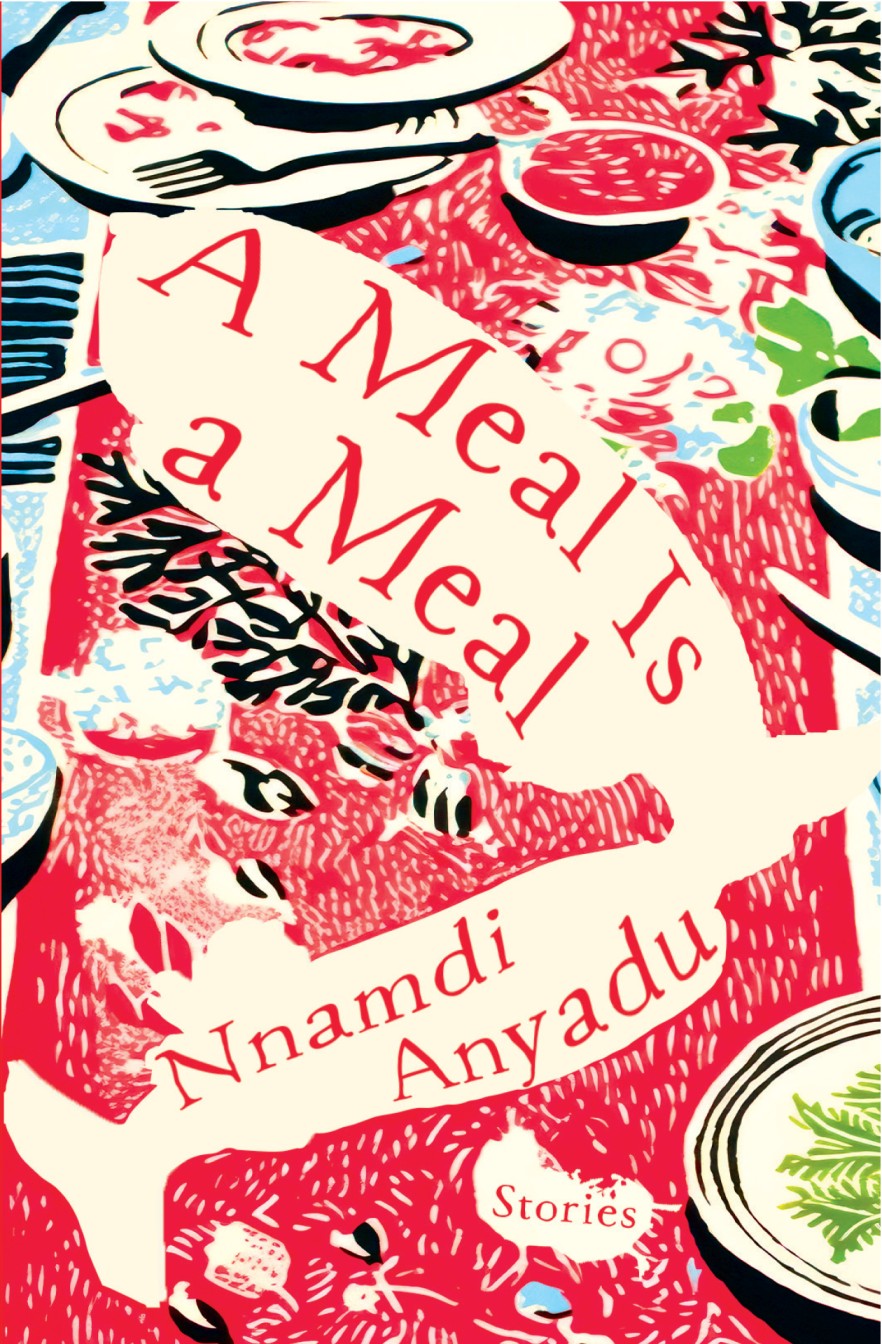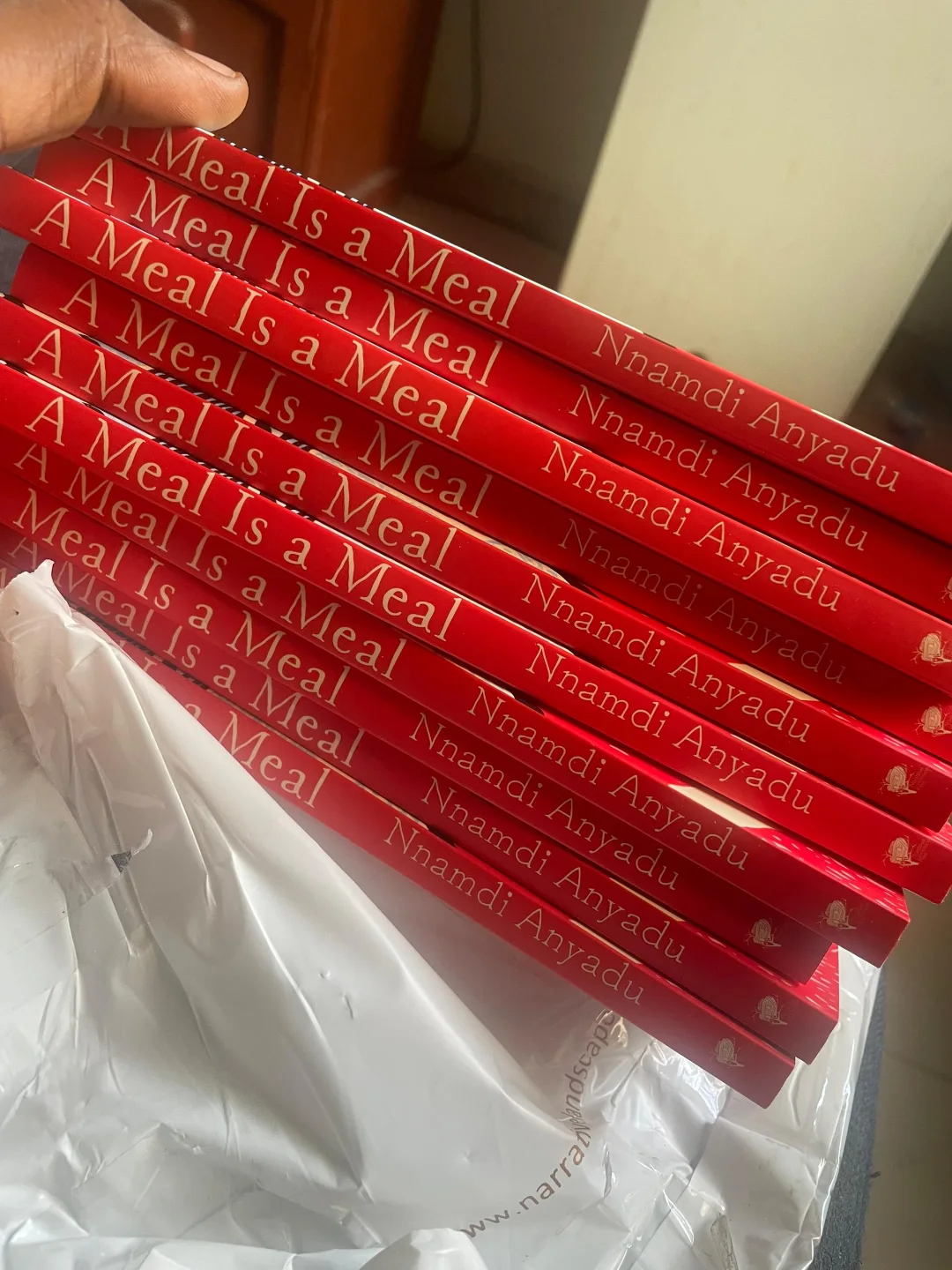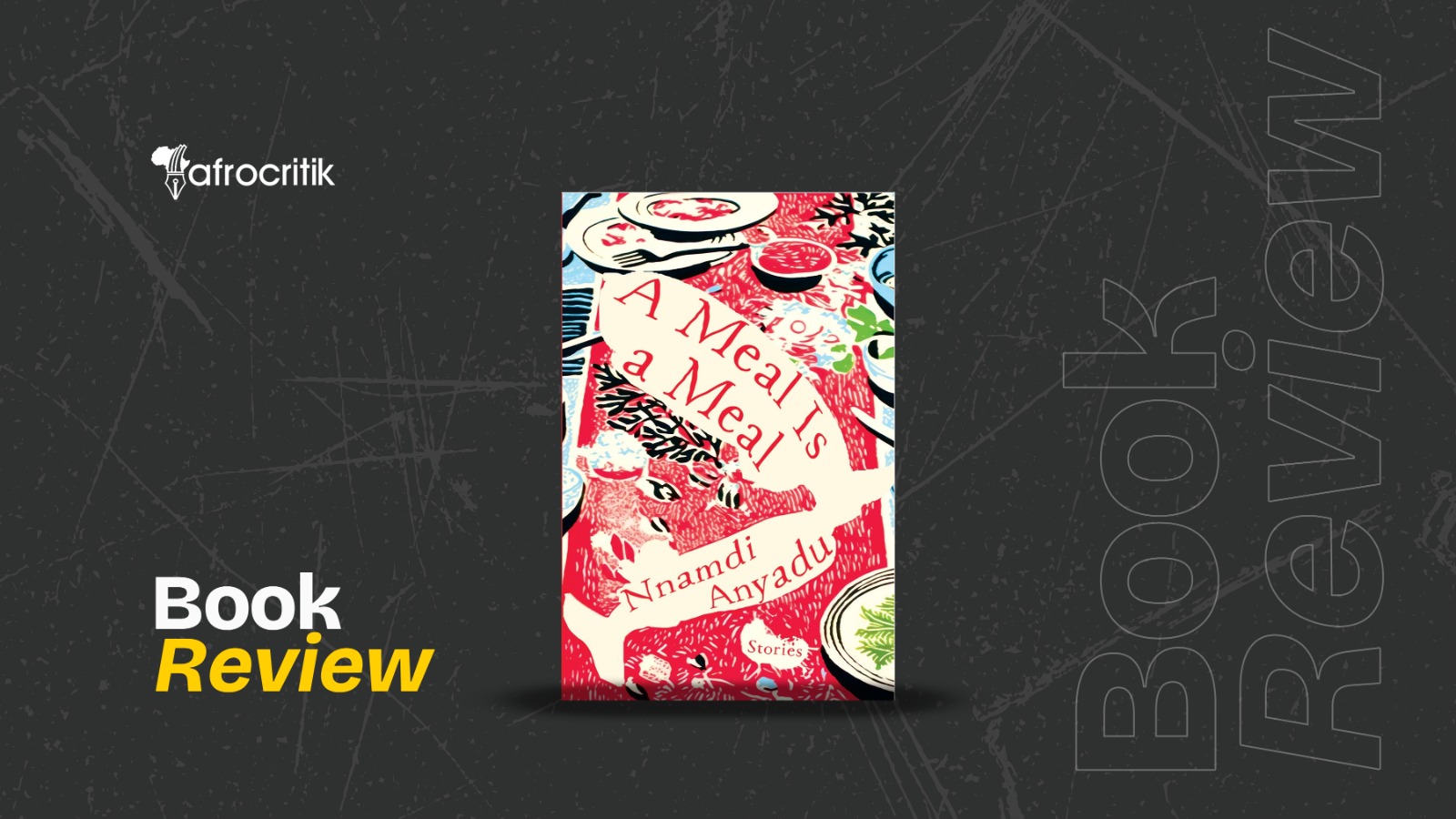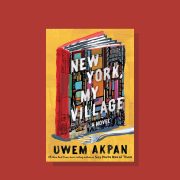One story after another, A Meal Is a Meal offers us a balanced plate of strange and familiar pleasures.
By Chimezie Chika
By the time we arrive at the last story in Nnamdi Anyadu’s debut collection of stories, A Meal Is a Meal, we are convinced, in its pleasurable aftertaste, that we have read something as entertaining and as similarly stimulating as anything in the best that the literary tradition we now call dark comedy has to offer.
To wit, the darkly comic nature of the twelve food-themed stories in the collection offers up all kinds of wild and subdued pleasures. The lightest of these—which is to say, the most humorous—is “Cheers!” which features two young university students facing off in an impromptu beer-drinking contest. But even here, the implication of the darker arts is made manifest.

Skipping from one food item to another, the edible and inedible interests here can go from seemingly unremarkable fruits and foods like tangerines and jollof rice to forbidden rabbits and human meat. In the suggestive first story, “The Power of Orts”, a writer rediscovers her inspiration after making a jokey food offering to an imitation Benin bust. Is there something more? This sense of mystery becomes even more enhanced in the second story, “The Tangerine Encounter”—one of the best stories in A Meal Is a Meal—in which a young man begins to hallucinate apocalyptic and primeval images after eating a tangerine he bought from a haggard hawker.
It is remarkable how Anyadu compresses the extraordinary into ordinary events and objects. If we are still wondering how tangerines can create fascinating scenes of near-schizophrenic torture, we are even more riveted with the titular story, “A Meal Is a Meal”, in which a seemingly harmless serial killer prowls the streets of a town looking for human prey to kill for the enjoyment of her cannibalistic family. The scene where the serial killer butchers and sections her victim’s corpse a la Patrick Bateman in Ellis’ American Psycho (2000) is notably blood-curdling.
The macabre is tangible in these pages, but Anyadu’s particular skill eases us into its darkness with a light and conceit-aware touch. For instance, in “A Meal Is A Meal”, we do not suspect anything until almost midway through the story. The same can be said of stories such as “Love Portion”, “Suppers at Slumber”, “Potluck Jollof”, and even “The Power of Orts”. In each, Anyadu often delays the punch lines, which makes them all the more impactful.
As we progress through A Meal Is a Meal, it becomes obvious that the mystery that permeates Anyadu’s stories is overtoned with consistent surrealism. Each story has something paranormal either going on or, at least, overtly implied therein. What makes this all the more quietly devastating is that the characters we are dealing with herein are not some heroic creations of earth-shattering proportions; they are ordinary people living ordinary lives.

In one story, a woman repeatedly offers comfort to the broken people around her (and finally to herself) by making iced tea for them. So enormous is the singular object of iced tea—which the story seems to be a paean to—that one is tempted to project that it might be the author’s favourite drink.
The surrealist conceit can sometimes create metaphorical connections between stories, which is what we see in both “The Tangerine Encounter” and “Suppers at Slumber”, where oneiric fantasies can create avenues for psychoanalysis of the cautious social rules of urban life in superstitious societies like Nigeria.
The plot of these two stories comes from urban and traditional lore, and this may seem to be the case with many of the stories including stories like “Forbidden Rabbit”, whose plot excavates the sort of sacred animal totems that are the practice in many parts of Igboland in particular, and Africa in general.
This quality in the stories in A Meal Is a Meal is enhanced by the fact that the cities and towns where the stories happen are mostly unnamed, which gives them a fable-like aura, as if they are happening in a realm unmediated by time and the concreteness of nomenclature—a rootless yet familiar combination of the distant past and an alternate present.
Many of the characters are unnamed as well: we either get generic stand-ins such as “The wife”, “The man”, “The boy”, “The girl”, or simply pronouns that emerge from the points of view from which the stories are told.

The stories are written in all kinds of POVs, including third person, first person, second person singular, and first person plural. The last two can become mince-meat in the hands of a lesser writer. In Anyadu’s fluid, assured, and sensible prose, the POVs give the stories the sort of character and voice that enhances their central themes. An example is “Forbidden Rabbit”, which is written in the collective voice of a community where rabbits are forbidden. Or the fable-like voice that propels stories like “The Porridge Strategy”.
One story after another, A Meal Is a Meal offers us a balanced plate of strange and familiar pleasures. At 133 pages, it’s a notably quick read too, but one which provides sustained engagement. Being one of the most thoroughly enjoyable books I have read in a while, this is also the sort of book that can be read as entertainment at a friend’s party or gathering, one that has the capacity to dig you out of a reading slump.
Chimezie Chika is a staff writer at Afrocritik. His short stories and essays have appeared in or forthcoming from, amongst other places, The Weganda Review, The Republic, The Iowa Review,Terrain.org, Isele Magazine, Lolwe, Fahmidan Journal, Efiko Magazine, Dappled Things, and Channel Magazine. He is the fiction editor of Ngiga Review. His interests range from culture, history, to art, literature, and the environment. You can find him on X @chimeziechika1




